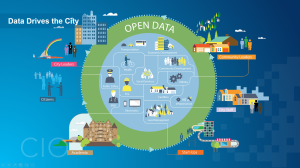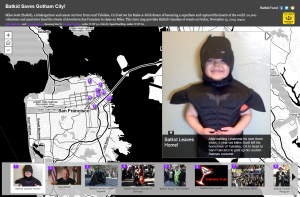This time I’m reviewing the Inbound Marketing class from Hubspot Academy.
I chose this class because I wanted to see how this class compares to the Inbound class I reviewed previously. Will I find it redundant or will it build on the class I already took?
- Class: Inbound Marketing
- Author: Hubspot Academy
- Published Duration: 4 hours and 12 minutes plus 1 hour exam.
- Certification: Yes

The class is made up of 34 videos broken into 10 separate lessons. The lessons cover topics such as Inbound Marketing Basics, different marketing strategies, how to create different marketing content types, and how to align your marketing efforts with other departments, especially sales.
While the class is advertised as being a little over 4 hours, which is the length of all the videos, I took longer to complete the course. From my experience with the Inbound class and it’s certification test, I knew detailed notes were key to understanding the materials and completing the exam. I paused the videos frequently to write down my notes.
Overall, it took me a few weeks to complete the class by going through the lessons here and there when I had time. The breakdown of the lessons made it easy for me to take a break and pick things back up. I rarely felt lost or confused when I came back to the class. If I completed the class in one sitting, I estimate that it would have taken me about 8 hours to complete all the videos and take the exam.

Like all Hubspot Academy classes, there is a study guide that I found extremely useful for taking notes.
As an example, here are the study guide and my notes from Lesson 7: Understanding Conversion Strategy:
I did run into an issues with the study guide for Lesson 6, Developing a Conversational Growth Strategy, which mentions SLOPE and TTL as topics that would be covered in the lesson but actually never came up in the videos. I found this information in a Hubspot blog post, Why You Need a Conversational Growth Strategy Now. Questions about SCOPE or TTL did not come up in the certification exam. Either Hubspot forgot to update the study guide when they updated the class or there is a video or two missing from Lesson 6. It is one of the shortest lessons, so that’s a possibility.
Class Content
As stated above, the class is broken down into 10 lessons covering a wide variety of topics. Every class was useful and gave me tangible things I could do right away to improve my marketing efforts. There were only a few suggestions that I felt were outside my experience with Product Marketer, such as business model changes or discount plans, which would fall under the purview of another department, such as Product Management or Business Development.
The lessons flow together well but are fairly independent. I feel like I could have take the lessons in pretty much any order and have understood the content without any problem. Topics included developing a content strategy, how to create blog, web, and social media content, campaign optimization, lead nurturing, understanding customers and prospects, and aligning with Sales.
There are some gaps that I would like to see closed in future versions of the class. Email marketing is referenced throughout the class, but it would be useful to include a lesson dedicated to email marketing. Also, while the class was appropriately focused on understanding customers and prospects, I would have liked to have seen a little more focus on researching your company’s industries and competitors.
I am glad I completed the Inbound class first. That class dived more into the Inbound methodology fundamentals, such as SMART goals, that was only briefly touched upon in this class. Therefore, the Inbound Marketing class does build off the Inbound class, even though I do not think that was their intention.
This class is not for the novice marketer. It would not replace a Marketing degree or an MBA as it is does not cover some of the fundamentals of Marketing, such as the 4 Ps. Nor do I think it should. This course provides a practical guide for practicing marketers to adopt the Inbound Methodology to improve their marketing efforts.
Final Thoughts
I encourage every practicing marketer to take this class. I had put off taking this class for years because I thought I was too busy. Now that I’ve taken this class, I believe this class is essential to becoming a better marketer. I would require any new marketing hire to take this class (and the Inbound class) in their first 30 days.
If there is a Marketing training class or any other topic that you would like me to cover, put it in the comments below or contact me on Twitter @kachelriess.




 I worked with the great people at the
I worked with the great people at the 